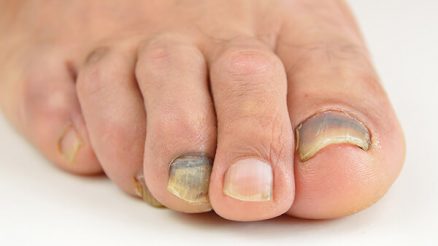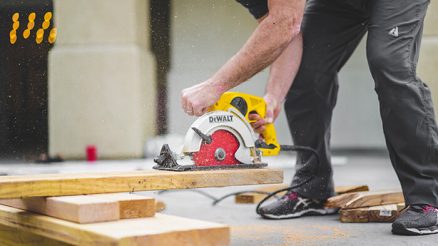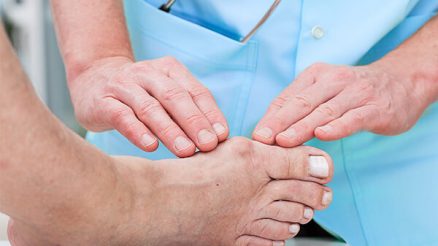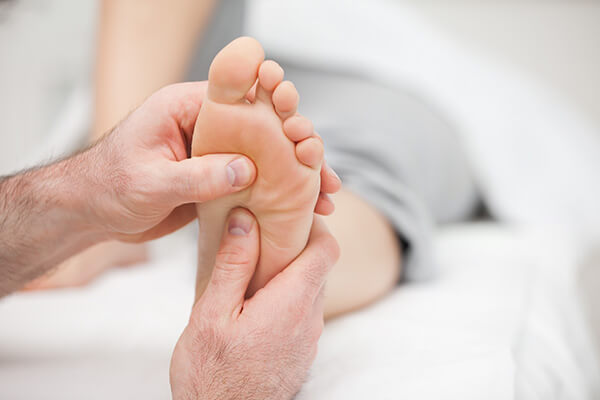
What is it? | Symptoms | Causes | Treatment
Overview
There are patients who are not aware that they are suffering from the capsulitis of the second toe. To make it simple for you, the problem is an inflammatory condition. Capsulitis may also occur in various parts of the human body.
By implication, your foot is not the only target of the problem. There are various activities that result to this problem. For instance, if you often stoop when gardening. Furthermore, you may suffer from capsulitis if your job involves constant ladder climbing or plumbing work.
To other’s surprise, do you know that wearing high heeled shoes may also result in the repetitive toe bending, giving way to capsulitis. There are much more to discover about this ailment. By learning more, you will also be aware of how to eradicate it properly.
What Is Capsulitis Foot?
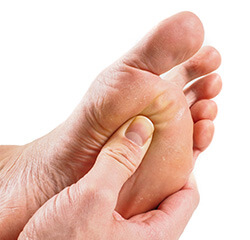
Are you aware of the capsulitis of the second toe? It is relatively the surrounding ligaments of the second toe base’s joint. It is known to form a capsule, which is necessary for assisting the joint to function accordingly.
Capsulitis of the second toe is a condition characterized by the inflammation of the said ligaments. Although this problem can also take place in the fourth or third toes, records show that it often affects the second toe.
As anticipated there is discomfort associated with the second toe joint pain. If left untreated, you will likely suffer from toe dislocation. It is also found out by doctors that this problem can occur at any age of the patient.
Common Symptoms of Second Toe Capsulitis
Most people who are diagnosed with capsulitis would complain about their forefoot’s nagging pain. This symptom can be felt at the bottom or top side of the foot. Furthermore, there may be discomfort when toes are stretched either up or down.
Other symptoms of the ailment are the following:
- Pain in the ball of the foot.
- Forefoot stiffness.
- Difficulty in walking.
- Swelling (area close to toe joints).
- Redness (area close to toe joints).
What Causes Capsulitis Foot?
There are various reasons why you may be suffering from second toe pain. There are various healthcare providers and podiatrists who actually believe that the issue is due to the abnormal mechanics of the foot.
Furthermore, 2nd toe pain may also be due to the excessive weight being placed on the ball of your foot. However, there are other reasons that can lead to pain in second toe, here are some examples.
- Unstable foot arch.
- Extreme deformity of bunion.
- The second toe is longer than the big toe.
- Wearing high heel shoes repeatedly.
- Tight calf muscles.
- Imbalance of your feet muscles on the top and below.
Now that you are aware of the possible reasons for the problem, you will not only have ideas of how to treat capsulitis but its prevention as well.
Capsulitis of the Second Toe Treatment
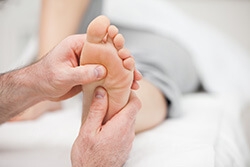
The best time for the treatment of capsulitis foot is during the early stages. In other words, there is nothing better than mitigating the worsening systems of the capsulitis of the second toe.
Prior to the treatment, your physician will likely perform a diagnosis on your condition. This is essential since the symptoms of capsulitis foot can be similar to that of Morton’s neuroma. However, the two conditions’ treatments are different.
There is also a possibility that the doctor will search for possible causes of your capsulitis of the second toe. Test on your joint stability will likely be carried out as well. Images solutions and X-rays may be necessitated.
Most importantly, the purpose of treating the problem is to search for means of redistributing the load weighed on your forefoot.
Among the top solutions around for your capsulitis are the following:
1. Metatarsal Pads and Forefoot Gel Cushions:
The products are developed for problems similar to capsulitis of the second toe. Most doctors recommend the cushions of pads for forefoot pain. You may find one for both your right and left feet.
Using the pads and cushions is very easy. You simply slip it around your middle toes. Once set, it will be able to eliminate the metatarsal heads and plantar forefoot’s pressure. Moreover, it can also provide callus pain relief.
You can be certain that these products are safe since these are not allergenic and toxic.
2. Proper Arch Support or Prescription Orthotics:
These are treatments particularly developed in order to promote the comfort and support for your feet. In other words, these are products that pair your feet’s contours accurately.
Normally, you can obtain one of these orthotics after your physician had done a complete assessment of your legs, ankles, and feet. Orthotics are made for capsulitis foot in two major ways.
First, you may use it for additional support and comfort. Second, you may use the solutions in order to control the unusual motions of your feet.
In truth, orthotics has long been used to address diabetic foot ulcers, plantar fasciitis, tendonitis, and bursitis.
3. Good-Fitting Shoes:
Apart from capsulitis foot, good-fitting shoes have always been recommended to eradicate or prevent various joint problems. As mentioned above, you can treat capsulitis if you will be able to maximize the comfort of your feet.
When buying footwear, you should avoid those that are flimsy. In other words, you should prevent sandals and flip flops. These types of footwear will only put you at more risks to having the problem.
With too much flexing of the forefoot, your ligaments will be overstretched, particularly those that are found on the foot ball.
4. Rest and Ice:
If you want to get rid of the pain and swelling associated with capsulitis, rest and ice are among the most effective solutions around. Primarily, you just have to apply an ice pack on the affected area.
As much as possible, you should not put the ice cubes directly onto your skin. Instead, you must utilize a thin towel between your skin and the ice. Place the ice for 20 minutes.
Before applying the ice again, you should take a break for at least 40 minutes.
Moreover, if you can actually take a break from your job for a while, you should do so. In such way, you will be able to obtain quicker recovery.
5. Injection of Cortisone:
This medication is given near the joint affected by capsulitis or directly into the area suffering from the symptoms. It is known to be effective in eradicating the inflammation associated with the problem.
To be specific, cortisone is a type of corticosteroid. This is actually provided by the adrenal glands as a stress reaction.
However, you must remember that cortisone is not for pain relief. Still, it was observed that it can also address pain for a few days, which is a sign that your inflammation is being solved.
6. Stretching Exercises:
When inflammation and joint problems are involved, stretching exercises have always been recommended. If you have a tight calf, stretching will be able to solve the imbalance of tendons in your feet.
One of the most effective stretches you may try is the toe extensor stretch. This is a simple routine that is considered as the most important foot health exercises.
The steps involved in the stretching exercise are also aiming to eliminate the negative effects of using conventional shoes. Normally, your footwear causes your tendons and muscles to become imbalanced.
Additionally, normal footwear may cause heel elevation, upward toe ramping, and approximately 20-degree toe spring.
7. Taping/ Splinting:
You can consider taping as a common method of addressing capsulitis of the foot. It is also easy and cheap at the same time. The purpose of the solution is to find out biomechanical issues that can be corrected.
Alternatively, you may also use the dancer’s pad instead of low dye taping. Splinting can be developed for the forefoot. It often comes with a second toe cutout, which is reliable if you want to get rid of the pain.
By using any of the two, you will be able to preserve the correct position of your toe. Besides, it also avoids the toe’s further drifting.
8. Prescription of Anti-Inflammatory Medication:
There is a great number of anti-inflammatories that may be prescribed for your recovery from the symptoms of capsulitis. One good example of a medication you can try is ibuprofen.
Your goal with taking anti-inflammatory is to have the medication for up to one to two weeks regularly. It is necessary to increase the level of anti-inflammation in your blood. This will also raise your chances of healing from the problem.
9. Limiting Hard-Impact Activities:
If your job often involves hard-impact activities, it is best to take a break for a while. With strenuous jobs, your foot joints are more exposed to risks of fracture, accidents, and injuries.
As long as a certain task causes you to limp or feel pain, you should avoid it.
10. Surgical Procedures:
Surgery is an option if the aforementioned solutions do not work in healing capsulitis. The purpose of the surgery is to shorten and cut the second metatarsal. In such way, the pain will be able to reduce the toe base’s pain.
Normally, the surgical procedure for capsulitis is called osteotomy. Apart from the surgery, there may be other solutions to be done, such as involving pressure reduction and foot straightening.
Conclusion:
With the facts about foot capsulitis provided above, you will be able to identify both preventive and treatment options to use. By evaluating your current condition, you may mitigate the symptoms right away. Alternatively, you may opt for a physician check-up, especially if your remedies have not worked as anticipated.





